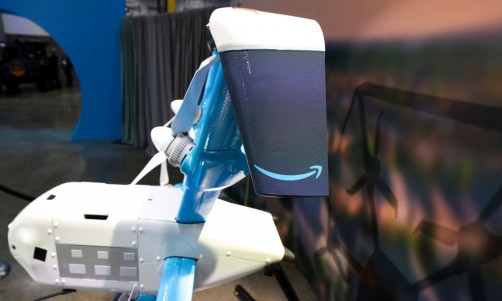2016 has been a bountiful year for space marines and explorers. Before the calendar reach end, here are the list of the biggest and wierdest space discoveries and events of the year.
Proxima Centauri B
A planet in its star's "fit for human habitation planet" - an area where it's not too hot nor too cold for liquid water to exist on its surface - was found well-nigh in our planet's patio this year. Named Proxima Centauri B, the planet was discovered during a campaign called Red Blue Dot where astronomers collectively shared details of their search earlier months of 2016. The planet is alleged to be about 1.3 times the form of the Earth and circumnavigating about 5 percent of the Earth-sun distance from its cool parental star. The team was commanded by Guillem Anglada-Escudé, from Queen Mary University of London.
TRAPPIST-1
TRAPPIST-1's three planets together were quite the astrophysical find. The research team unraveled evidence of three Venus- and Earth-sized exo-planets, which was unusual given that TRAPPIST-1 is an ultracool dwarf star and there are no planets have been found around a star of this kind. Finds like this are stirring because it's easier to spot planetary heavens - especially for livable environments - if the star is justly dim. The team was commanded by Michael Gillon, of the Institute of Astrophysics and Geophysics in University of Liege, Belgium.
Planet Rings Spinning The Wrong Way
In 2015, astronomers proposed that a curious series of eclipses around J1407 could be caused by a planet with a huge ring structure. Then earlier this year, the team published another paper suggesting that the planet's system would only work if the rings circled around the planet are in the opposite route! As uneven as this sounds, their designs suggest the planet's rings could keep at for more than 100,000 years. Matthew Kenworthy of Leiden University led the research, in the Netherlands.
Three Planets Around Two Close Stars
We've all heard of several Tattooing-like systems comparable to "Star Wars", where a planet circles two stars. But we're starting to see some even more bizarre recipes. Scientists found a system in which has three planets orbiting two stars and that are very close together (the closest ever in history to observed). The stars namely HD 133131A and HD 133131B. Scientists are now reviewing this system closely to see if Jupiter-like planets often begin with long and odd orbits. Johanna Teske of the Carnegie Institution for Science led the team.
One Planet Orbiting Three Stars
It seems eccentric to think of a single planet surviving a three-star orbit around it, but such a planet has been discovered. The HD 131399 system structures a planet with the broadest known orbit in a multi-stellar system. While stargazers thought that this type of orbit was dubious, since they have found one they guess to find many like it. Kevin Wagner at the University of Arizona led the team.
Kepler's New Mission Yields 100-plus Exo-Planets
Some time ago, the Kepler space telescope - a respected exo-planet hunter - lost the ability to point exactly with its wheels. NASA devised a new mission using the sun's gravity to steady the telescope, and shockingly discovered it's been producing information more than expected. This year, the so-called K2 mission broadcast that it has returned 104 exoplanets. One of the most auspicious finds among these was the star K2-72, which has four rock-type planets.
Kepler's Database Yields More Than 1,200 Exo-Planets
Although the Kepler telescope's principal mission is over, the data from its years of exploration persist. NASA is continuing analyses to see how many of these planetary applicants are likely to be planets. The newest results show that 1,284 of them are 99 percent possible to be planets. Of these, nearly 550 are expected to be rocky planets - and nine of those hypothetically rocky planets are in the livable zone of their stars.
Baby Planet Just 11 Million Years Old
Earlier this year, astronomers publicized they had found the freshest known planet - just 11 million years old, a segment of the Earth's 4.5 billion years. It's a super-Neptune unevenly five times the size of Earth and circles its star only five million miles apart, making it a sweltering world. It was found with the K2 mission and then complete with the MEarth-North and MEarth-South arrays in Arizona and Chile, just to confirm it wasn't a star spot. Andrew Mann at The University of Texas at Austin led the research.
Another Spot For Exo-Planet-Hunting
While explorations are ongoing all over the milky way, a scientist project under NASA's Disk Detectives program has found a probable spot to search for more livable planets in coming years. They found some circumstellar disks (commonly found with early planetary systems) around the red dwarf star AWI0005x3s. The star is only 212 light-years away from Earth, which makes it a rich area for continuation since it's easy for telescopes to view. The chief on the project was Steven Silverberg at Oklahoma University.
Planet Nine
Though it's not theoretically an "Exo-Planet," it's unquestionably an alien world that's been triggering some sparks this year. Planet Nine is a theoretical planet at the edge of our universe that would take an absurd 10,000 to 20,000 years to circle around the sun. Through demonstrating and simulations, the scientists say that the survival of Planet Nine could help elucidate the motion of matters in the Kuiper Belt, an icy realm beyond Neptune. The California Institutes of Technology's did the investigation namely Konstantin Batygin and Mike Brown; Brown is best known for discovering several nearly Pluto-sized objects in the outer space.













